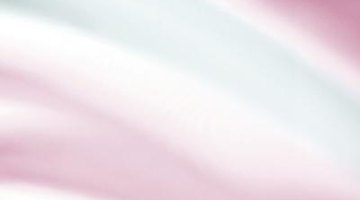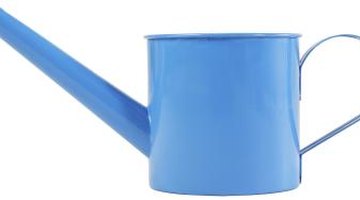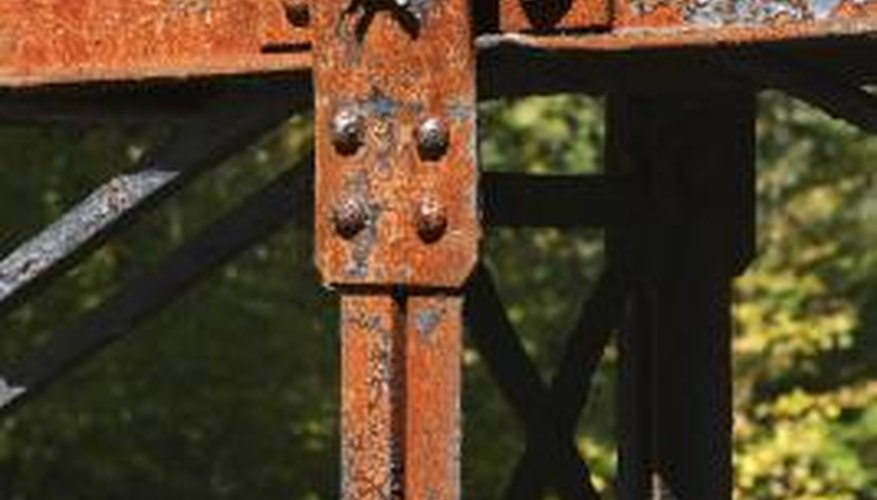Painting rust texture can be a challenge, even for experienced watercolourists. The dilapidated surface and uneven texture of oxidised metal objects requires a range of techniques and colours. If you are comfortable with watercolours and ready to take on the challenge of painting your rusty reference from life or a photo, read on.

Paint light, nearly transparent washes of the item's base colour, or the colour that appears beneath the rust, onto your paper. Use clear water on your brush and dab at the edges of the paint to blend one section into another. Leave highlighted areas lighter if the object is reflective. This subtle base coat will establish the general colour of the object before the rusting set in. It may be grey for bare metal or the original hue of a coat of paint.
- Painting rust texture can be a challenge, even for experienced watercolourists.
- It may be grey for bare metal or the original hue of a coat of paint.

Establish shadows with a transparent coat of Payne's Grey in the object's darker areas. Keep the transition from light to dark subtle by wetting the edges slightly with your brush so that the pigments run together. Continue to add grey pigment until you are happy with the level of darkness in the shadows.
Apply a wet, transparent wash of light red in the main rusty areas. Move around the object with your brush, applying the red wherever the metal is stripped of paint and oxidising. This will be your most subtle rust effect, so keep the transition areas soft by blending them into the main surface colour with a wet brush.
- Establish shadows with a transparent coat of Payne's Grey in the object's darker areas.
- Move around the object with your brush, applying the red wherever the metal is stripped of paint and oxidising.

Allow your paper to dry or use a hairdryer to speed up the process. When it is dry to the touch, mix light red with only a little water for a thicker paint consistency. Apply this darker wash to the centre of the light red washes you painted earlier. The more intense spot of colour will indicate the centre of the rust spots. Dab with a wet paintbrush to blend the new, darker colour at the edges. This will make the effect more gradual and realistic.
Blend french ochre, burnt umber and french ultramarine blue on your tray with only a drop or two of water. Apply this thicker mixture by dabbing unevenly at the centre of your rust spots, along the edges of the rusty form and anywhere that the rust is dark and bare metal is visible. The uneven dabbing motion will make the metal look jagged.
Use a strong french ultramarine blue to paint small spots over the rusty surface of your object. These small spots will give the illusion of bare metal showing through the rust and increase the contrast of your painting.
- Blend french ochre, burnt umber and french ultramarine blue on your tray with only a drop or two of water.
- These small spots will give the illusion of bare metal showing through the rust and increase the contrast of your painting.
Repaint the rim and edges of the metal object with a dark mixture of french ultramarine blue, raw umber and french ochre in the same dabbing motion you used earlier. This layer should be the darkest so far. If it does not stand out as darker, add more french ultramarine blue to the mixture. This step will give the metal a more dimensional, ragged appearance.
Let your painting dry or use the hairdryer to bring it to total dryness. Dip your brush in clear water and re-wet any areas that you want to work back into. Just as you did in the first step, apply subtle washes of colour to extend shadows or rusty areas. Refer to your reference and continue to layer the washes until the colours are saturated enough to represent your object. Your rusty metal will have a multilayered and realistic appearance.
TIP
Painting specific textures in watercolours can be challenging. If you're having trouble, learn or refresh your basic watercolour techniques first. There are many websites, such as WaterColorTechniquesandProjects.com, that can help.
